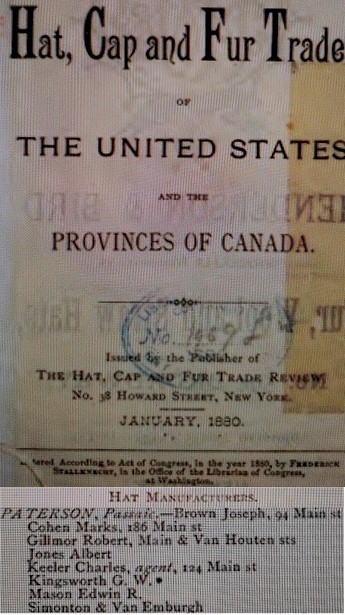Page 37 : Beale Ciphers Analyses
Beale C1, The Locality of the Vault, is solved
This is the story: The Caching of the Confederate Treasury
Some details on the decryption: Beale C1
This story could not have happened without the close collaboration of my two partners. We wish we could claim to have solved this famous cipher but our contribution was to link the decryption to actual historical events and people. This required extensive research over several months.
David operates a residential construction business in Georgia. He knew Paul James Smith through the friendship of their mutual spouses, and he introduced Paul to Kenneth and me.
Kenneth is a retired police officer living in Indiana. He has been very active in the Beale research community for several years as well as other treasure mysteries. His projects include:
Email contact: Kenneth Andrew Bauman
After the introduction by David I continued a correspondence with Paul, via USPS and telephone, from 2007 to 2011. He was a very unusual personality; determined, opinionated, blunt. He was a conspiracy theorist, especially regarding UFOs. He was convinced the government was hiding information. We disussed the alleged alien wreckage at Roswell, New Mexico.
I still have six of the letters he sent me. It is from these that I was able to write his brief biography. He used expressions like DMTNT (Dead Men Tell No Tales) and BTTDB (Back To The Drawing Board).
The following are a few of the well known opinions published by experts.
In 1980, James Gillogly, a computer scientist at the think tank RAND and the president of the American Cryptogram Association published an opinion which is now known as the Gillogly strings. When Beale cipher 1 is decoded with the DOI it produces several character strings, the best known being ABFDEFGHIIJKLMMNOHPP. This is statiscally impossible so he concluded that therefore, The Beale Papers story is fiction, and that the ciphers cannot be solved. We agree the story is fiction, and that Beale C1 cannot be solved by using the DOI as key. But clearly it is solveable by other means as we have shown.
Dr. Hammer was the first serious researcher of the Beale ciphers with academic credentials. He was Director, Computer Sciences, at Sperry Rand Univac, at a time when this company was a major supplier of then-called "supercomputers" to the NSA. He was the founder of The Beale Cypher Association along with some NSA employees. He was a believer in the story.
Peter earned a master's degree in engineering from MIT and became president of Grumman Data Systems Corp. He authored several books on the history of Virginia and notably on the Beale story. He was the first to identify Ferdinand Hutter as the probable author of The Beale Papers. We concur that Ferdinand wrote the C1 cipher but not necessarily the whole story.
Dr. Matyas earned a doctorate degree in Computer Science writing the first doctoral thesis on the subject of Cryptography in the U.S. His doctoral thesis was about the Beale ciphers. During his career at IBM and into retirement he continued to believe that the Beale ciphers did contain valid messages. He agreed that Ferdinand Hutter was the author and added that the Hutter family had it published in his honor.
Now that the solution to C1 has now been found we believe that The Beale Papers story was created as a means to envelop and publish the C1 cipher, and that the strings were inserted as a simple misdirection.
During our months of historical research we had the opportunity to consult with several experts on Beale and cryptology. Critics abound. The most frequent comment received was "it's a stretch". Here are some specific responses:
We agree with the last one. We would all prefer a simple solution. Perhaps one day a visitor to this page will find it. In the meantime we ask the skeptics a simple question: Show us your solution and then we can debate the merits of each. They don't have a solution.
Fortunately, we also have had very positive responses, ranging from simple congratulations to great enthusiasm.
“All truth passes through three stages. First, it is ridiculed. Second, it is violently opposed. Third, it is accepted as being self-evident.”
A few years ago I saw a photograph online of Jesse James standing with Robert Enoch Withers. This photo came from Withers' collection.
James had been a financier for The Knights of the Golden Circle and is known to have stashed valuables in the western mountains. He would have been interested in the Confederate treasury. This connection fits well with Elk Mountain in Crested Butte, Colorado, being the alternative hiding site for the treasury, as opposed to Machias Seal Island.
The Simontons were an influential family in Paterson, New Jersey. Brothers James and Peter both had seperate businesses as clothiers. Their father Thomas was a lawyer and city councilor, and William was a civil engineer, probably employed by the city.
 |
 |